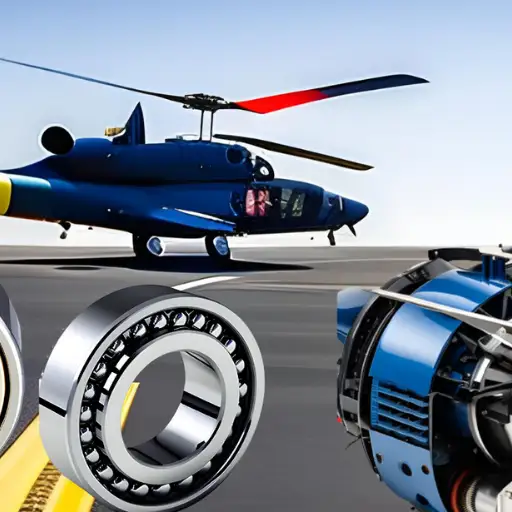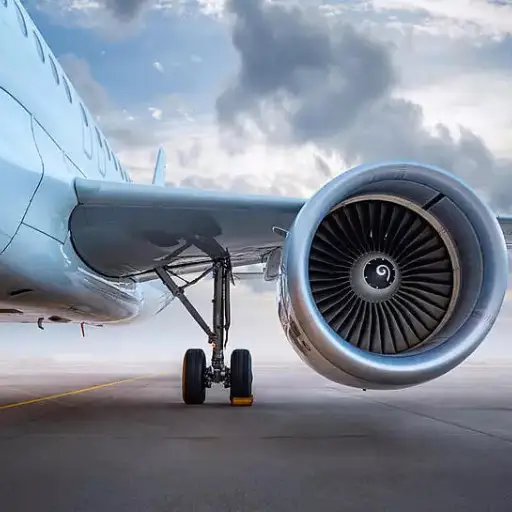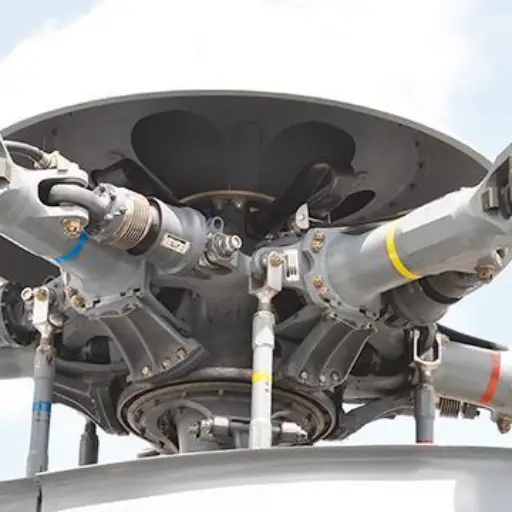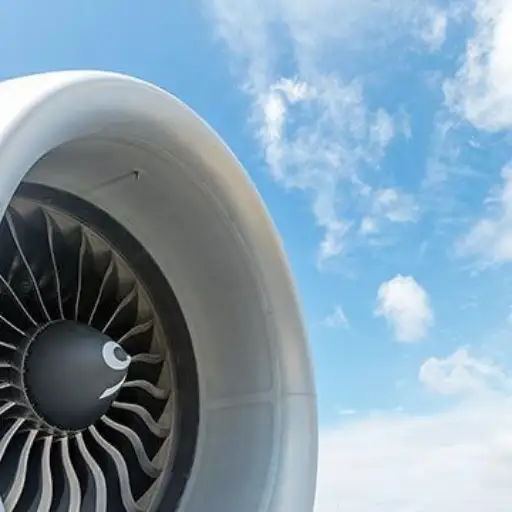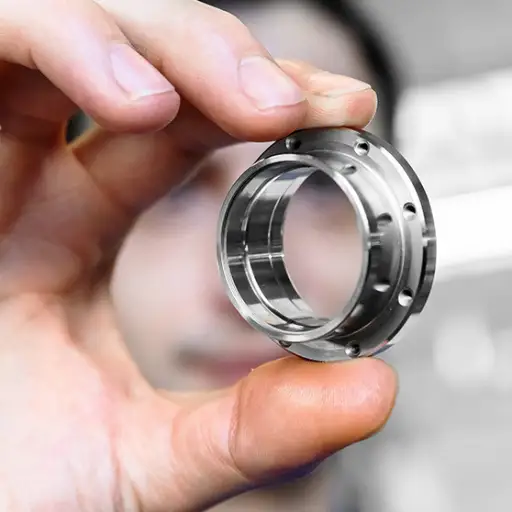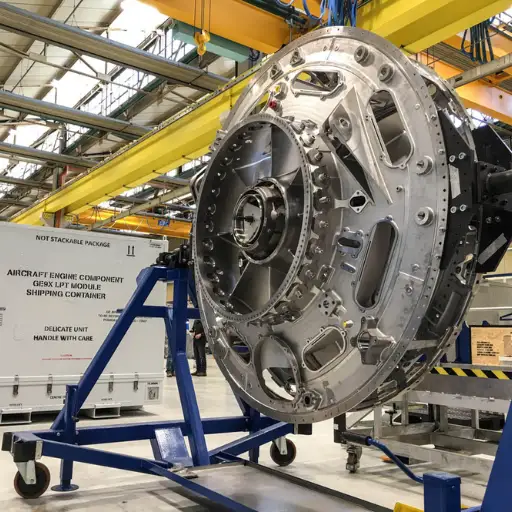Aerospace bearings are a critical component in the design and function of aircraft. These highly specialized devices are engineered to withstand extreme flight conditions, including high speeds, varying temperatures, and intense vibrations. In this blog, we will explore the vital role of bearings in the aerospace industry, from their applications in various aircraft parts to their importance in ensuring safety and performance. Understanding the intricacies of aerospace bearings provides insight into their engineering marvel and highlights their essential contribution to the reliability of modern aviation. Through this guide, readers will understand how these components operate within the broader framework of aircraft systems.
What are Aerospace Bearings and Their Importance in Aviation?
An Insight into the Aerospace Bearings and Their Functions
Aerospace bearings can be defined as the components in mechanical devices that assist in motion and reduce friction among moving parts. These bearings are made from a high-quality material such as certain alloys and ceramics, which helps them carry out their function efficiently even when exposed in-flight. It can be thus said that the main objective of aerospace bearings is smooth progression whether it is in the form of rotation or linear motion while also being lightweight and able to bear heavy stress and strains and also respond to changes in temperature, pressure and vibrations. In the field of aviation, the bearings above find their application in various systems like engines, landing gears, control surfaces and many other forces. Therefore, aerospace bearings are essential to the movement due to its accuracy, precision, structure, safety, efficiency and performance of the aircraft.
What makes Aircraft Bearings an Asset: Their importance in ensuring the safety of an Aircraft
Aircraft bearings are fundamental to an airplane’s safety as they support the parts and minimize the friction and wear of the components necessary for their operation. These bearings are located in parts that enable motion and rotation of important features like jet engines and associated components, coexist with the forces and temperature and stress sequences experienced in flight. Controlling motion and bearing loads in space, aerospace framework bearings help to preserve the functional and active state of aircraft systems. Their effectiveness is a defining factor in the capability of the aircraft to operate safely in different domains so as to alleviate the chances of mechanical failures that regularly lead to unprecedented disasters when airborne. Besides, the applications of modern materials and engineering technologies with respect to aerospace bearings increase their life span and performance as a corrective measure to safety issues within the aviation industry.
The Function of Aerospace Bearings in Control of the Aircraft
Control of the aircraft during its flight is done with the help of a number of systems, and precision movement of an aircraft’s parts is performed with the help of aerospace bearings in the flight control systems. Bearings are applied physically and serve physically like moving hinge joints forming a connection between control surfaces with ailerons, a flight control surface usually found on the outer wing panels of a fixed-wing aircraft; elevators and rudders. Concerning varying operational loads and changing environmental factors, the bearings render frictional opposition to motion and operate under stable conditions that are necessary to provide the characteristics demanded for effective flight control. The aerospace bearings uniquely and reliably serve their purpose with enhanced control and due to their optimum stress tolerance as a result of advanced techniques and quality materials. It is vital as it helps the airplane in flight path correction as well aids in safe execution of turns hence improves efficiency and safety of the aircraft.
Types of Aerospace Bearings Used in the Aviation Industry
Aerospace Applications Distinction Between Ball Bearings and Roller Bearings
Bearing structures are standard component in mechanical devices. However, there is a difference between their applications. In aviation, the most commonly used bearings are ball and roller bearings, which are integrated into different parts of the structure. While allowing the structure to operate, ball bearing units consist of spheres that prevent friction between rotational surfaces under very little force. Their primary use is within in-flight control systems or in situations where rapid cutting movement is required and only a small load must be applied. But unlike ball bearings, which support a small load and consist of rollers, roller bearings include cylindrical or spherical forms that allow them to support a much larger area and therefore a greater radial load, which is essential for landing gears or engine structures supporting rotating parts. Besides, the cylindrical shape of roller bearings allows them to take on more weight with more significant environmental stress. Performance, load capacities, speed, allowances are just but a few factors that can be considered between the two types of bearings in consideration.
What are Precision Bearings and their uses in different aircraft components?
Precision bearings are thin-walled rolling element bearings that consist of intricate internal geometry, allowing for efficient precision engineering applications. These bearings are intended to be able to function under the more effective characteristics required by modern aircraft design concepts. Precision bearings are commonly used in the aircraft industry in high speed and temperature conditions, where they play a vital role of maintaining the alignment of critical rotating parts within the engines. There are also bearings in gyros and other avionics instruments, where exact functioning is needed in order to control and stabilize the aircraft. Precision bearings also play a crucial role in the retraction and extension of the landing gear, enabling smooth operations under different operating conditions. Overall, due to the fundamental properties of these bearings such as increased load capacity and lower friction, the reliability and operational efficiency of aircraft systems are improved.
Use of Thin Section Bearings in the Lightweight Designs of Aircraft
In lightweight aircraft design, thin section bearings play an important role since they can minimize the system’s total weight with a maintained efficiency. The cross-sectional area of these bearings is made small to increase the diameter while keeping the overall size compact. Such a construction feature becomes even more helpful when the available space is limited in the application. In thin walled load bearing aircraft structures such as control surfaces and landing gears, thin section bearings are employed in rotating parts which enhance the effectiveness and efficiency of these mechanisms. They are equally beneficial in that they can take radial, axial, and moment loads, thus applicable in diverse areas in the aerospace industry. The use of thin section bearings assist in achieving weight reduction targets and increased operational efficiency and performance of aircraft.
Key Standards and Certifications for Aerospace Bearings
What you need to know about AS9100D Certification of Aerospace Bearings
Every organization in the aerospace industry is constantly working toward goal achievement, hence, AS9100D certification is a quality management system applicable to aerospace products and services. This certification is based on ISO 9001 standards but adds additional aerospace industry requirements to capture the unique processes and regulatory demands of the sector. The directions instilled in the workforce include the assurance of total quality management, risk management, and the enhancement of customer satisfaction. Such organizations must comply with this certification and show that they are capable of producing high-quality aerospace bearings which are paramount in several cut-out applications concerning safety and reliability. AS9100D certification relies upon thorough reviews of corporate processes and practices to ensure the organization continues improving and keeps up with the dynamics of aerospace.
What Bearing Standards Must Aerospace Components Comply with?
Bearings, as a part of the aerospace components, have to comply with rigorous worldwide criteria in the form of standards so as to enhance safety, dependability, and performance. Two important standards are the AS81820 and AS81819, which contain the requirements for design, construction, and testing of these self-lubricating bearings that are specially manufactured for use in the aerospace industry. These standards ensure that bearings can perform under the extreme conditions that are characteristic of aerospace applications such as hight temperatures and stress loads. Furthermore the SAE AS8996 standard lays down the basic methods for the testing and controlling the performance capabilities of bearing materials and its components. Manufacturers need to follow these and other appropriate standards in order to ensure that their aerospace bearings will be able to forecast the demanding conditions of air and space travel.
The Role of Quality Assurance in Aerospace Bearing Manufacturing
Aerospace bearings are critical components in high cost applications, which makes quality assurance critical in the manufacturing of these parts. It entails highly organized and effective processes aimed at ascertaining the integrity, reliability and safety of the aerospace bearings. Employing all required measures to ensure each bearing is of international standard or better for example, stress testing, fatigue testing, or material comparison to the best standards. It also minimizes the risk of operations and assures meeting the legal requirements which strengthen the trust of the manufacturers in the society. This approach of doing things improves product usage but at the same time is consistent with technologies focus on safety and growth.
Custom Solutions for Aerospace Bearing Applications
Which one is a better option between Custom aerospace bearings and their counterparts?
The decision between opting for standard or custom bearings depends on a few important parameters, including the application’s performance requirements and the environment of operation. Usually standard aerospace bearings are selected where the application is within the normal parameters and where budgetary considerations are paramount. They provide a wide variety of readily available solutions that fulfill the most common requirements in aviation. Custom bearings, on the other hand, avoid the need for a compromise between functionality and aesthetics by allowing for a more robust design that requires specialized materials or dimensions in order to meet specific performance requirements. They are designed specifically to match the strict guidelines or intended use and can withstand varying degrees of non-standard conditions or loads. Also, the decision should take into account lead time, performance, costs, and the degree of close cooperation with the manufacturers needed to create and finalize the specification. Balancing the requirements with the available options in the end turns out to be the best way to choose between standard and custom bearings.
Importance of Hybrid Bearings in Aerospace Industry І Aerospace Engineering
Hybrid bearings merge metal with ceramic components for a range of space applications. First, those bearings weigh less which decreases the total mass of the aircraft which is important for fuel effectiveness and performance level. Second, the ceramic components in the hybrid bearing are more thermally and electrically insulated, preventing the likelihood of undesired electrical discharges and reducing the amount of friction at very high speeds. Which enhances lifespan and reliability. Furthermore, hybrid bearings also have a very good wear and corrosion resistance which makes them effective for harsh conditions usually found in aerospace applications. With these advantages, as well as the capability to use them in high-temperature settings, hybrid bearings are considered a dependable and effective solution for aerospace industries.
Targeted Scientific Development of Specialized Aerospace Bearing Solutions
At the outset it should be understood that when developing custom aerospace bearings to meet specific requirements, its particular application, determining the bearing’s design, materials, and performance may need changes. The standing leading industry sources highlight the application of the possible constraints and working with the manufacturers to offer tailor made solutions. This entails analysis of geometry constraints, thermodynamic parameters of the environment including temperature and pressure, and certain specifications of loads to be carried. Moreover, one of the integrated methods emphasizes precision engineering to overcome wear and friction problems in components and materials, which are very important for the service life of aerospace parts and assemblies. It is also stressed that complex computer-aided design and simulation methods should be applied to ensure the custom-designed solution complies with certain requirements, thus increasing the efficiency and reliability of the custom-designed solution in the narrow aerospace environment.
Future Trends in Aerospace Bearing Technology
Column in Terms of View and on Technology Modernization
Bearings used in aerospace and defence composites show that the core need is now to look out for the design and development of intelligent systems. The emerging trends such as integrating self-lubricating materials and sensors in bearings improve the systems’ efficiency and performance. Predictive maintenance systems are being developed with data analytics and active monitoring capabilities. Such maintenance reflects on reducing system outages and increasing the life span of the components. Also worth mentioning, is the introduction of low weight composite materials that has the most impact in reducing weight and improving engine efficiency for the aircraft design. By adopting and adapting to these emerging technologies, performance and safety levels in aerospace and defense sectors will be enhanced.
Advances in the future of Aerospace Bearings
In view of the developments made, as I move on to consider the developments made in ball bearings for aerospace applications, the future as seen considering the industrial trends is set to be better than what it is now. I envisage an increasing emphasis on the incorporation of smart features that improve the operation of ball bearings. Such embedding of sensors will aid in acquiring monitoring and data-gathering capacity which will encourage regularly spaced predictive maintenance. Such a system will likely save operational time as there will be less downtime and improve performance in varying conditions. Further, the perspective incorporating additional advancements in material science should bring completely new composites, which will be light and strong, and increase the durability of ball bearings and flexibility of the whole aerospace systems. The trends, therefore, are in line with industry trends of meeting the requirements on the performance of systems and further ensuring environmental sustainability in application of advanced aerospace technology.
What Improvements Can We Expect to See in Aerospace Bore Bearings Used in Future Aircraft?
The question of how aerospace bearings are evolving for next-generation aircraft has been surprisingly fascinating. There is, for example, a more pronounced shift towards the use of sophisticated materials which can support higher strength-to-weight ratios, thus improving the aircraft’s performance whilst reducing weight. Another trend includes the embedment of smart technologies within the bearings which allow for the collection of real-time data that can be used to perform predictive maintenance on the machines and reduce the amount of unscheduled downtimes. Furthermore, tlubrication technologies have expanded developmentthat seek to provide improved performance and durability to better serve the industry’s demand for long-lasting components. All these advancements are directed towards high efficiency and safety. They are also able to cope with the increasingly challenging requirements of modern aerospace technology.
Reference sources
- The evolution of reliability and efficiency of aerospace bearing systems – This article discusses the reliability and mechanical efficiency of aerospace bearings, particularly focusing on main shaft bearings in modern aircraft engines.
- Bearings for aerospace applications – This source covers the demanding operating conditions of aerospace bearings and the systems used to enhance their reliability and lifespan.
- A new method of calculating the attainable life and reliability in aerospace bearings – This paper presents a method for determining the life and reliability of aerospace bearings, considering modern conditions and materials.
These sources should provide valuable insights into the feasibility and reliability of aerospace bearings for your readers.
Frequently Asked Questions (FAQs)
Q: What is an aircraft bearing?
A: An aircraft bearing is a bearing intended for aviation applications that has been specifically manufactured to meet such rigorous requirements.
Q: What are the most common bearings used in aircraft applications?
A: Aircraft applications often utilize various types of bearings, fsuch asdeep groove ball bearings, angular contact bearings, sand pecialized airframe control bearings,
Q: What is the technology or product range aircraft bearing manufacturers offer in the aerospace market?
A: Aircraft bearing manufacturers offer solutions targeted the aerospace market by producing precision bearings operating under high performance requirements and complying with FAA and other regulations.
Q: What features differentiate aircraft ball bearings from most other types of bearings?
A: Aircraft ball bearings are designed to provide higher load and speed capability compared to their standard counterparts in performance and durability needed for aviation use.
Q: Which of the bearing certificates should the manufacturer have and why?
A: An aircraft bearing manufacturer should be AS9100D certified indicating they comply with specific quality management systems applicable to the aerospace industry.
Q: Why do aircraft engineers use precision bearings?
A: Precision bearings improve safety, allow for the reduction of Friction, and enhance performance. They are essential for flight operations.



